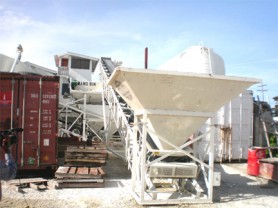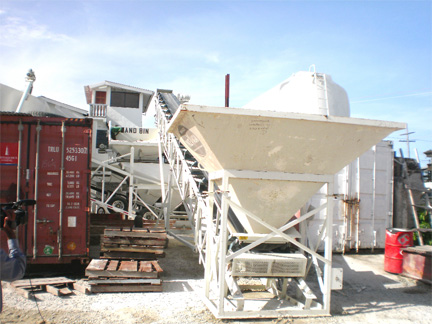BK International has invested over US$600,000 ($120m) in a modern Concrete Ready-mix automated batching plant and a hollow block plant as part of its ongoing effort to improve its operations.

Brian Tiwarie, Managing Director of the establishment, told Stabroek News recently that about US$300,000 was invested in the Vince Hagan batching plant , while a further US$300, 000 was spent on the hollow block plant. Both plants are said to be among the most modern on the market and have been described as being environmentally friendly.
The additions of the new machines make the company’s operation almost self-sufficient as it relates to concrete mix. Since the company already owns its own quarry and sand pits, the only essential item in the concrete making process that it does not currently produce is the cement.
Earlier this month, media operatives were taken on a tour of the facility which is located at the company’s Kingston Stone Depot. The hollow block plant has the capacity to produce 900 blocks an hour but currently produces 500 an hour. Three days after coming off the machine, the blocks would be ready for use.
The concrete plant has been in operation for two years but since becoming automated earlier this month its production level has risen by 100 percent, this newspaper was told. It now can produce about 150 cubic yards of cement per hour.
Jamie Hudson, an engineer with the US-based Command Alkon, travelled to Guyana to calibrate the new system as well as to train some operators in using the computerized system. The calibration of the system had to be approved by the Guyana National Bureau of Standards. According to him, the new system would increase the capacity of the plant as well as improve the quality of the product.
Project Manager Dr. Clifton Inniss said that while the company sells to local contractors, much of what is produced is used by the company itself in its own construction efforts. He said that while the new additions are welcomed, the operations are still slightly incomplete since two large silos, which are to be used to store cement on the site, have been stuck on the wharf.
The two facilities employ about 60 people and this includes both foreign and locally trained people.

